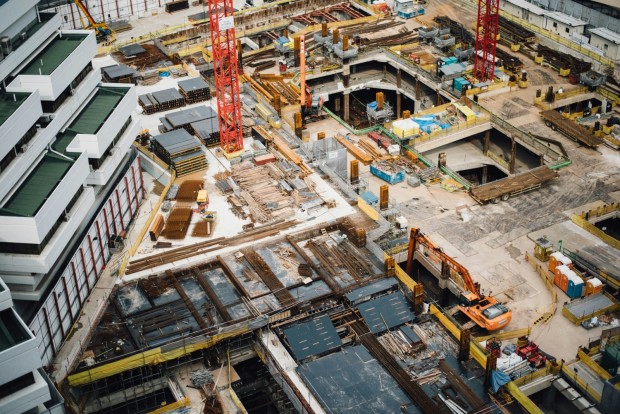Building codes serve as essential guidelines in construction projects, prioritizing worker safety. Unfortunately, despite their importance, certain regulations are disregarded or violated during the construction process.

(Photo : Unsplash/CHUTTERSNAP )
1. Missing or Defective GFCIs
Provision for ground-fault circuit interrupters (GFCIs) has been mandated for all outdoor circuits and outlets in the kitchen, lavatory, and garage. To prevent electrical shocks, it will cut off electricity to a circuit if it senses a change in the current. As mentioned, the existence of ground fault circuit interrupters can be determined by inserting a GFCI socket tester into an outlet in each location. In addition to identifying whether or not the circuit contains a GFCI, it will also identify other wiring issues, such as open grounds and reverse polarity.
2. Improper Bathroom Venting
Bathroom exhaust fans should be vented to the home's exterior, through the roof or the side of the house, instead of into the attic. As mentioned, plunge your head into the attic to investigate your home's ventilation system. Nevertheless, aside from potentially fostering the growth of mold and mildew, venting warm, damp air into the attic may fail to adequately dehumidify the bathroom and result in rot in the roof framing and sheathing.
3. Placement of Smoke Alarms
When developing a new structure plan, the engineer is reportedly responsible for ensuring that each floor is clean. Hardwired smoke-ired smothery backups are linked to other smoke alarms to activate simultaneously. They need to be installed in every bedroom of newly constructed residences. The distance between smoke alarms fixed on ceilings and the closed walls must be at least four inches. Moreover, smoke alarms mounted on the wall must be installed between four inches and one foot below the ceiling.
Also Read: Key Strategies to Unlock Success in Construction Financial Management
4. Rescue Openings/Emergency Escapes
One or more rescue openings and emergency escapes must be in all bedrooms, attics, and basements where people live. Accordingly, these features are required for each sleeping room in a basement or attic with numerous sleeping rooms. Inspectors frequently find these openings and exit inoperable or partially functional, even though most engineers comply with this construction rule.
5. Basement Bedrooms Without an Egress Window
Constructing an underground bedroom without an egress window, a tiny window design permitting passage in the event of a fire or other emergency constitutes a significant code violation and a potential safety hazard. The peace of mind that egress windows provide is incomparable to the cost of the windows, which ranges from $2,500 to $5,000.
6. Missing Fire Protection Documentation for Building Permits
Ensuring the proper organization of permits and documentation is critical for new construction and renovation projects. Take this precaution to avoid the possibility of lengthy plan review comments, significant design adjustments, delays in obtaining permits, and cost overruns. On the other hand, when looking for direction regarding the requirements necessary in your local jurisdiction, you should consult the official of your local building code.
7. Lost or Broken Fire Extinguishers
Small fires can be effectively put out with fire extinguishers. However, if the extinguishers are damaged or not present in their containers, it is impossible to accurately or completely put out the fire. Accordingly, invest in the services of a qualified fire safety technician to perform routine inspections of your fire extinguishers to ensure that they are installed correctly and operating effectively.
Related Article: Building Codes 101: Understanding Safety Standards in Every Project







